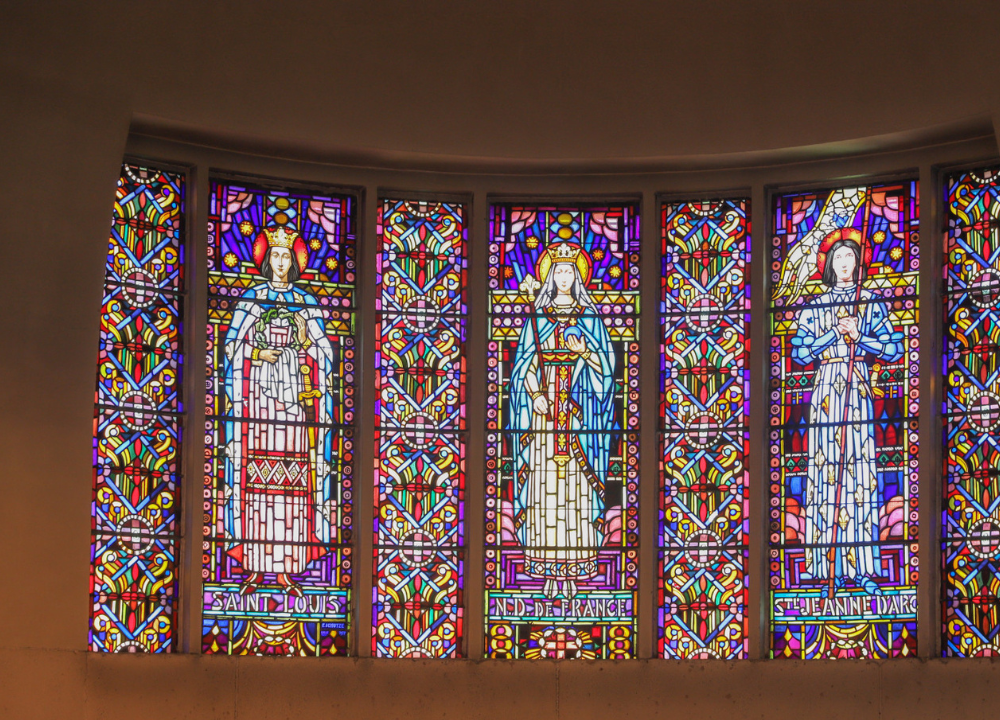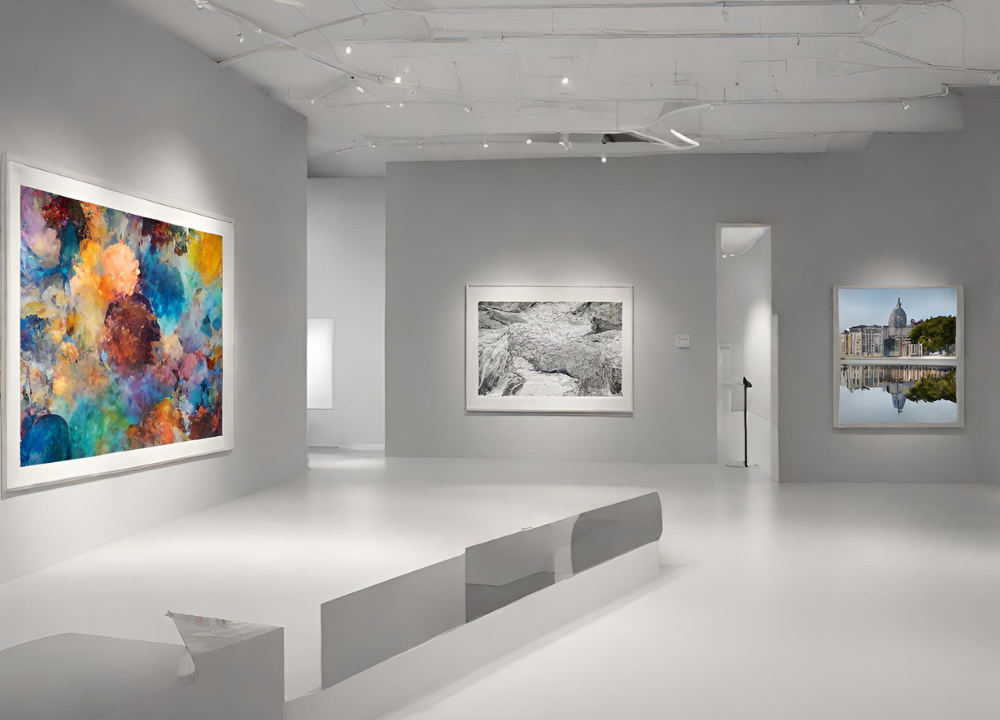The Chartres Cathedral in France showcases the pinnacle of stained-glass art. Its windows are renowned for both their beauty and historical significance.
Stained glass, as an art form, reached its zenith during the Gothic period, with Chartres Cathedral serving as a premier example. This medieval masterpiece, dating back to the 13th century, holds a collection of over 150 windows, each telling a vivid story through color and light.
History Of Stained-glass Art
Stained-glass art stands as a testament to human creativity and skill. This form of art has illuminated spaces with stories and colors for centuries. From the grand cathedrals to modern homes, stained-glass windows represent both spiritual tales and decorative beauty. Let’s dive into the rich history of stained-glass art to understand its evolution and significance.
Origins Of Stained-glass Art
Stained-glass art has roots deep in history, tracing back to ancient times. Initially, it served both functional and aesthetic purposes. Here’s how it began:
- Ancient Beginnings: The use of colored glass dates back to Egyptian and Roman times. They used it for jewelry and small decorative items.
- Early Christian Influence: By the 4th century, churches began to incorporate stained glass into their windows. This marked the start of stained-glass art as we know it.
- Gothic Era Glory: The Gothic period saw a surge in stained-glass windows. They became larger and more intricate, with churches and cathedrals showcasing biblical stories through glass.
Below is a table showing key periods in the history of stained-glass art:
| Period | Features |
|---|---|
| Ancient Times | Small, decorative uses |
| Early Christian | Biblical scenes, simple colors |
| Gothic Era | Large windows, complex designs |
This journey from small decorations to grand windows shows the growing importance and beauty of stained-glass art over centuries.
Evolution Of Techniques
The beauty of stained-glass windows evolved with new techniques. Let’s explore how these changes brought stained-glass art to its pinnacle:
- Lead Came Method: This method, using lead strips to hold glass pieces, became popular in the early days. It allowed for more detailed and complex designs.
- Painting on Glass: Artists began painting details directly onto glass in the medieval period. This added depth and realism to the images.
- Enamel Painting: By the Renaissance, enamel painting on glass introduced vibrant colors and detailed scenes, further enhancing the art.
Technological advancements also played a role:
- Glass Making: Improved glass making techniques led to clearer and more consistent glass colors.
- Cutting Tools: Better tools allowed artists to cut glass more precisely, creating intricate designs.
These techniques combined to lift stained-glass art to new heights. Each advancement allowed for more detailed, colorful, and expressive pieces. Today, stained-glass art continues to evolve, blending traditional methods with modern innovation.
Significance Of Stained-glass Art
The art of stained glass captures the imagination and awe of all who gaze upon it. This craft blends vibrant colors and light to tell stories, signify beliefs, and enhance beauty. The pinnacle of stained-glass art is not just one work but a collection that showcases mastery in design, technique, and symbolism. Each piece holds deep significance, reflecting the culture and values of the time it was created.
Spiritual Symbolism
Stained-glass windows have been a staple in sacred spaces for centuries. They serve as more than just decorations. These windows carry deep spiritual symbolism. Consider the following points:
- Light Transformation: As light passes through the colored panes, it transforms. This symbolizes spiritual enlightenment and divine presence.
- Storytelling: Scenes from religious texts are often depicted, teaching and reminding viewers of sacred narratives.
- Color Meanings: Different hues hold specific meanings. For example, blue often represents heaven, while red signifies the blood of Christ.
Below is a table highlighting common colors and their associated meanings:
| Color | Meaning |
|---|---|
| Blue | Divinity, Heaven |
| Red | Sacrifice, Love |
| Green | Growth, Life |
| Purple | Royalty, Sorrow |
Architectural Integration
Stained glass is not merely an add-on to a building. It is a key element in architectural design. This art form integrates seamlessly with the structure’s overall aesthetic. Consider these points:
- Light and Space: Artists design stained glass to complement the space it inhabits. It interacts with natural light to create a dynamic effect.
- Structural Harmony: The patterns and motifs in the glass echo the building’s design elements, creating unity.
- Functional Beauty: Besides being beautiful, the glass also serves to control light and improve privacy.
Stained glass plays a crucial role in the overall experience of a space. It balances form and function, enhancing the environment. This integration makes each piece an intrinsic part of the building’s identity.

Notable Stained-glass Artists
Stained-glass art paints light with color and brings stories to life. It reaches its peak when artists master the dance of sunlight through colored panes. Notable artists in this field have pushed the boundaries, turning glass into breathtaking masterpieces. Their works are not just windows; they are narratives held together by lead and light. Among these artists, two stand out: Louis Comfort Tiffany and Marc Chagall. Each brought a unique vision to stained glass, leaving a legacy of luminous art that continues to inspire.
Louis Comfort Tiffany
Louis Comfort Tiffany is a name synonymous with exquisite stained glass. His innovative approach and artistic mastery set new standards for this art form. Tiffany’s work is distinguished by the following:
- Vibrant colors and varied textures
- Introduction of opalescent glass
- Unique “copper foil” technique, replacing traditional lead came
Tiffany’s passion for natural themes is evident in his designs. His works often feature floral motifs, landscapes, and abstract patterns. A table highlighting some of his notable works includes:
| Title | Year | Location |
|---|---|---|
| Autumn Landscape | 1923 | The Metropolitan Museum of Art, New York |
| Dragonfly Lamp | 1900 | Several museums and private collections |
| The Four Seasons | 1899-1900 | Charles Hosmer Morse Museum of American Art, Florida |
Tiffany’s work remains a testament to the beauty of stained glass. His legacy continues through the Louis Comfort Tiffany Foundation, supporting emerging artists.
Marc Chagall
Marc Chagall brought a poetic and narrative style to stained glass, often filled with dreamlike imagery. His stained-glass windows don’t just play with light; they tell stories. Noteworthy aspects of Chagall’s work include:
- Use of bright, bold colors to convey emotion
- Integration of mythical and religious themes
- Collaboration with master glassmaker Charles Marq to achieve unique hues
Chagall’s works are featured in sacred and secular buildings around the world. They offer viewers a glimpse into his rich inner world. A list of some famous installations by Chagall is as follows:
- Windows for the Saint-Stephen Cathedral in Mainz, Germany
- The Peace Window for the United Nations in New York
- The Hadassah Medical Center windows in Jerusalem, Israel
Chagall’s contributions to stained glass elevate the medium to new heights. His works serve as a bridge between art and the divine, leaving viewers in awe of his vision and skill.
Famous Stained-glass Pieces
Stained glass art has been dazzling eyes for centuries. This craft combines light and color to create stories on glass. The pinnacle of stained glass art can be found in pieces that are both historic and breathtaking. These masterpieces attract tourists from around the world. Let’s explore some of the most famous stained-glass pieces that showcase this incredible art form.
The Rose Window Of Notre Dame Cathedral
The Rose Window of Notre Dame is a stunning example of Gothic stained glass art. Created in the 13th century, this window is a focal point of the cathedral. It spans an impressive 10 meters in diameter. The window survived the 2019 fire, proving its resilience. Here are key details about the Rose Window:
- Location: Paris, France
- Date: Circa 1260
- Diameter: Approximately 10 meters
Design elements: The Rose Window features the Virgin Mary and Child, surrounded by prophets and saints. Its intricate patterns and vibrant colors illustrate biblical tales. The window’s structure and design allow light to dance through the glass, creating a divine ambiance.
| Color | Symbolism |
|---|---|
| Blue | Heavenly grace |
| Red | Sacrifice and love |
The Rose Window is not just art, it is a symbol of human skill and spiritual devotion.
The Windows Of Sainte-chapelle
Sainte-Chapelle stands as a gem of Gothic architecture in Paris. Its stained-glass windows are famous for their beauty and storytelling. Built in the 13th century, these windows transform sunlight into a kaleidoscope of colors. Here’s why they are special:
- Total Surface: Over 600 square meters of glass
- Number of Windows: 15 grand panels
- Scenes: 1,113 biblical scenes depicted
Unique features: The windows of Sainte-Chapelle are unique for their size and detail. They cover walls from floor to ceiling, standing 15 meters high. Each panel tells a different story from the Bible, capturing moments from Genesis to the Resurrection of Christ.
| Panel | Biblical Book |
|---|---|
| 1-6 | Genesis, Exodus |
| 7-10 | Leviticus, Numbers, Deuteronomy, Joshua |
Visitors often feel a sense of wonder when they see the light through these windows. The Sainte-Chapelle windows are a testimony to the power of art and faith combined.
The Pinnacle Of Stained-glass Art
The pinnacle of stained-glass art shines with vibrant colors and intricate designs. This art form turns windows into storytelling canvases. It dates back to ancient times but reached its peak in Gothic cathedrals. The best works show skill, creativity, and light play. They transform spaces into mystical experiences. Let’s explore the masterpieces that set the standard for stained-glass art.
Masterpiece Selection Criteria
Choosing the best stained-glass works involves several factors. Historical significance, artistic mastery, and innovation stand out. Key elements include:
- Age: Older pieces that withstand time show artistry and durability.
- Complexity: More details mean more skill.
- Color: Richness and layering of colors are signs of quality.
- Storytelling: Great works tell a story or convey a message.
Here’s a table highlighting these points:
| Criteria | Description | Example |
|---|---|---|
| Age | Pieces that survive centuries | The oldest stained-glass window in Augsburg Cathedral, Germany |
| Complexity | Detailed imagery and patterns | Windows at Chartres Cathedral, France |
| Color | Use of varied and vibrant colors | Chagall’s windows at the Hadassah Medical Center, Jerusalem |
| Storytelling | Visual narratives that captivate viewers | The Good Samaritan Window, Cathedral of Our Lady of Chartres, France |
Artwork Analysis
Each stained-glass piece tells a unique story. Artists use light, color, and texture to bring tales to life. The best examples create a dialogue between viewer and artwork. Take for instance the Notre-Dame Cathedral in Paris. Its windows are not just glass; they are lessons in history and faith. The Rose windows there are some of the most famous. They showcase Biblical scenes in a symphony of colors. These round windows draw eyes upwards, inspiring awe. Below are points to note in artwork analysis:
- Technique: Look at how artists lead and paint the glass.
- Light interaction: Observe the changes throughout the day.
- Iconography: Identify symbols and their meanings.
- Emotional impact: Feel the artwork’s effect on you.
Breaking down the elements helps us appreciate the art more. It shows the depth and work behind each piece. It reveals stories of faith, culture, and history. Truly, stained-glass windows are treasures of art and craftsmanship.




